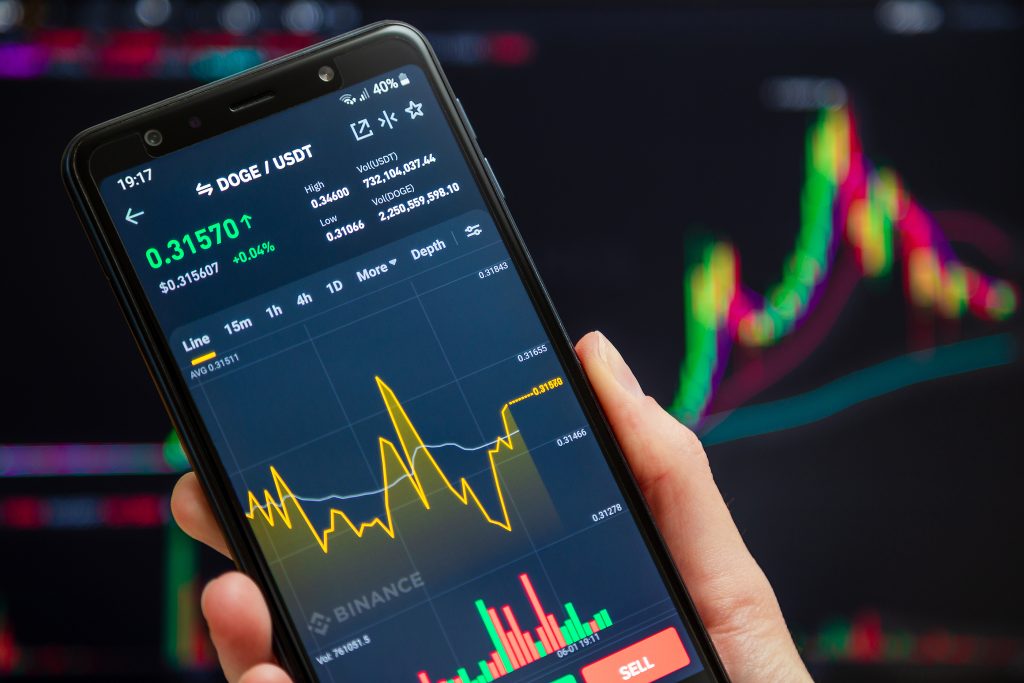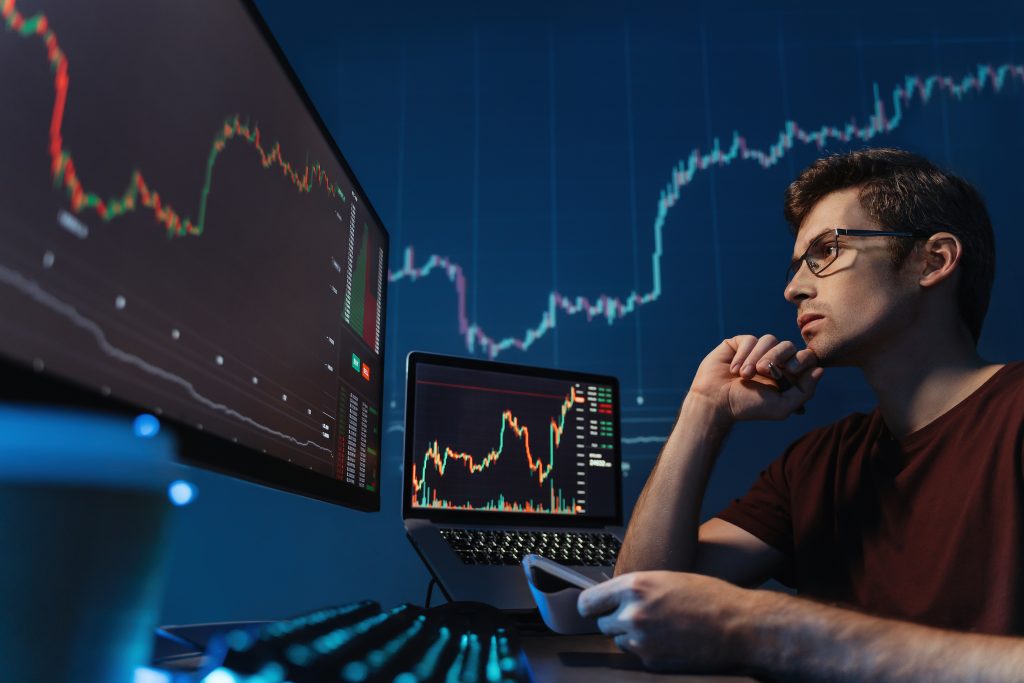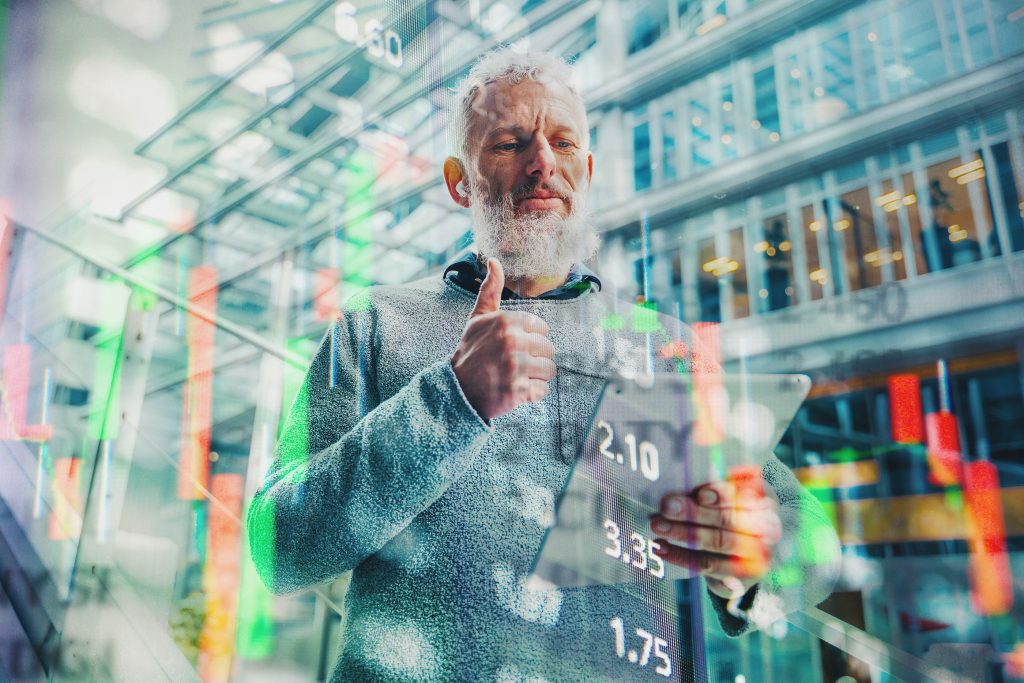Are you curious to know how Tradingview empowers automated crypto trading?
Discover the secrets behind this revolutionary platform and learn how it can help you trade smarter, not harder.
Automated crypto trading involves using software programs and algorithms to execute trades in the cryptocurrency markets without manual intervention. These mechanical systems can analyze market data, identify trading opportunities, and manage buy or sell orders based on predefined criteria and trading strategies. Traders often utilize automated trading bots or algorithms to capitalize on market inefficiencies, execute trades optimally, and implement complex trading strategies. It’s essential for traders to carefully design, test, and monitor their automated system to align with their trading objectives and risk tolerance.
Key takeaways
What is Tradingview
TradingView is a web-based platform that provides tools and resources for traders and investors to analyze financial markets, including stocks, cryptocurrencies, forex, commodities, and more. It offers various features, including interactive charts, technical analysis tools, social networking capabilities, and a marketplace for trading-related products and services.
The platform allows users to access real-time and historical market data, create customizable charts with various technical indicators and drawing tools, and collaborate with a community of traders and investors. TradingView also supports developing and sharing trading ideas, strategies, and analysis through its social networking features.
Furthermore, TradingView offers a marketplace where users can access third-party trading indicators, strategies, and other tools developed by the community or professional vendors. This allows traders to enhance their trading experience using various custom-built tools and services.
TradingView is a comprehensive platform for market analysis, idea generation, and collaboration within the trading and investing community. Both individual traders and professional investors widely use it for conducting technical research, developing trading strategies, and staying informed about market trends.
Here’s an overview of how TradingView works:
- Market Data: TradingView offers access to real-time and historical price information for various financial products, such as stocks, cryptocurrencies, forex, commodities, and indices. Users can view price quotes, volume data, and other market metrics in real-time.
- Interactive Charts: The platform provides interactive and customizable charts that allow users to visualize market data using various timeframes, chart types, and drawing tools. Traders can conduct technical analysis by adding indicators, trend lines, and other graphical elements to the charts.
- Technical Analysis Tools: TradingView offers various tools, including popular indicators such as moving averages, RSI, MACD, Bollinger Bands, etc. Users can apply these indicators to their charts to spot possible trading opportunities, trends, and patterns.
- Social Networking: TradingView features a social networking component that allows users to interact with a community of traders and investors. Users can share trading ideas, analyses, and strategies, follow other traders, and discuss real-time market trends.
- Idea Generation: Traders can publish their trading ideas, analysis, and chart studies on the platform, allowing them to showcase their insights and engage with other users. This feature facilitates idea generation and collaboration within the trading community.
- Marketplace: TradingView hosts a marketplace where users can access third-party trading indicators, strategies, and other tools developed by the community or professional vendors. This allows traders to enhance their trading experience using custom-built tools and services.
How Does Automated Crypto Trading Work
Automated crypto trading involves using software programs, often referred to as trading bots or algorithms, to execute trades in the cryptocurrency markets without manual intervention. Here’s an overview of how automated crypto trading works:
- Market Monitoring: Automated trading systems continuously monitor cryptocurrency market data, including price movements, trading volume, and other relevant indicators.
- Analysis and Decision Making: Using predefined rules and algorithms, the automated system analyzes the market data to use technical indicators to find possible trading opportunities, quantitative analysis, or other criteria.
- Trade Execution: When specific conditions or criteria are met, the automated system executes buy or sell orders on behalf of the trader. This can include placing orders on cryptocurrency exchanges or other trading platforms.
- Risk Management: Automated trading systems can incorporate risk management protocols, such as setting stop-loss orders, position sizing rules, and dynamic risk adjustments to help mitigate potential losses.
- Strategy Optimization: Traders can optimize their automated trading strategies through backtesting using historical data and fine-tuning parameters, and making adjustments based on changing market conditions.
It’s essential for traders to carefully design, test, and monitor their automated strategies to align with their trading objectives and risk tolerance. Additionally, selecting a reputable and compatible trading platform or broker that supports automated trading is crucial for successful implementation.
Automated crypto trading aims to streamline trading activities, minimize emotional biases, and capitalize on market opportunities by leveraging technology and algorithmic tools.
How to get started in Automated Crypto Trading
Getting started in automated crypto trading involves several key steps:
- Research and Education: Research the fundamentals of automated trading, including the types of trading bots available, popular strategies, and the risks involved. Learn as much as possible about the cryptocurrency industry and the dynamics of automated trading in this space.
- Select a Reliable Trading Platform: Choose a reputable and compatible trading platform or broker that supports automated trading through APIs. Ensure that the platform aligns with your trading objectives, offers a secure environment, and provides the tools for automated trading.
- Develop a Trading Strategy: Define your trading objectives and develop a clear strategy you intend to automate. This may involve using technical, quantitative, or other methodologies to identify potential entry and exit points for trades.
- Backtesting and Optimization: Use historical data to backtest your trading strategy and fine-tune parameters to optimize performance. This step is crucial for evaluating the effectiveness of your system under various market conditions.
- Risk Management: Implement robust risk management protocols within your automated trading strategy, including setting stop-loss orders, position sizing rules, and other risk control measures to help mitigate potential losses.
- Monitor and Adjust: Once your automated trading strategy is live, pay close attention to how it performs and be ready to adjust based on changing market conditions and the outcomes of your trades.
- Stay Informed: Keep yourself informed about market trends, news, and developments within the cryptocurrency space. This will help you adapt your automated trading strategy to evolving market dynamics.
It’s essential to approach automated crypto trading with a disciplined and informed mindset and to evaluate and optimize your strategies to improve their effectiveness continuously. Additionally, starting with a cautious approach and increasing your exposure gradually as you gain confidence and experience in automated trading is advisable.
Why is Automated Crypto Trading less risky than traditional trading in crypto?
Automated crypto trading is often perceived as potentially less risky than traditional manual trading for several reasons:
- Emotion-Free Execution: Automated trading systems execute trades based on predefined rules and algorithms, eliminating emotional biases often leading to impulsive or irrational trading decisions in manual trading.
- Rapid Response Time: Automated systems can react to market conditions and execute trades faster than human traders, allowing quicker responses to market opportunities or risks.
- Consistency: Automated trading systems can maintain consistency in trade execution, risk management, and adherence to trading techniques that can lessen the impact of human error.
- Backtesting and Optimization: Traders can thoroughly backtest and optimize their automated trading strategies using historical data, helping to validate the strategy’s effectiveness under various market conditions.
- Risk Management: Automated trading systems can incorporate risk management protocols such as setting stop-loss orders, position sizing rules, and dynamic risk adjustments, which can help mitigate potential losses.
- Reduced Psychological Stress: Automated trading can reduce the psychological stress associated with manual trading, as traders may not be as affected by the emotional rollercoaster of market fluctuations.
But it’s crucial to remember that automated cryptocurrency trading also carries risks, including technical failures, programming errors, susceptibility to market volatility, and potential losses if the trading strategy needs to be well-designed or risk management protocols are effectively implemented. Traders should carefully research, develop, and monitor their automated systems and remain vigilant in the rapidly evolving cryptocurrency market.
What are the different types of automated crypto trading systems available?
Several types of automated crypto trading systems are available, each designed to cater to different trading styles and objectives. Some common types include:
- Trend-Following Systems: These systems aim to capitalize on market trends by entering trades in the direction of the prevailing trend. They might use trend lines and moving averages as technical indicators or momentum oscillators to identify and follow trends.
- Mean Reversion Systems: Mean reversion strategies seek to benefit from the market’s propensity to return to its historical average. These systems may identify overbought or oversold conditions and execute trades based on the expectation of price mean reversion.
- Arbitrage Systems: Arbitrage trading systems exploit price discrepancies across cryptocurrency exchanges or markets to generate profits. They aim to capitalize on price differentials by purchasing and selling the same asset in multiple markets simultaneously.
- Market-Making Systems: Market-making strategies involve providing liquidity to the market by placing both buy and sell orders. These systems aim to profit from the spread between bid and ask prices and may involve frequent order adjustments to capture small price differentials.
- Algorithmic Execution Systems: These systems execute trades based on predefined algorithms and rules. They may incorporate a range of trading strategies and can be designed to react to specific market conditions or events.
- Quantitative Analysis Systems: Quantitative trading systems utilize statistical and mathematical models to examine market data and make trading decisions. These systems often involve complex quantitative models and may use historical data to inform trading strategies.
- High-Frequency Trading (HFT) Systems: HFT systems execute many trades at high speeds, often leveraging advanced technology and low-latency trading infrastructure to capitalize on small price movements.
It’s essential for traders to carefully consider their trading objectives and risk tolerance when selecting an automated trading system, as each type has advantages, limitations, and risk factors. Traders may also choose to develop custom trading systems tailored to their specific requirements and preferences.
TradingView Automated Trading – Transforming Indicators into TradingView Bots
Suppose you’re eager to unlock the potential of automated trading and witness the transformation of indicators into powerful trading tools. In that case, the “TradingView Automated Trading – Transforming Indicators into TradingView Bots” video is an essential watch. This engaging video provides a comprehensive demonstration of how to harness the capabilities of TradingView to automate trading strategies by leveraging indicators and transforming them into functional trading bots. By delving into integrating TradingView with compatible third-party trading platforms or brokerages that offer API connectivity and automated trading features, the video provides a compelling insight into the seamless conversion of indicators into automated trading tools. Whether you’re a seasoned trader seeking to streamline your trading activities or an aspiring investor looking to explore the realm of algorithmic trading, this video equips you with the knowledge and practical steps to harness the power of TradingView for automated trading.
By watching this video, you will gain valuable insights into integrating indicators from TradingView into automated trading strategies, empowering you to automate trade executions based on your customized hands. The visual demonstration and expert guidance provided in the video offer a compelling opportunity to learn how to optimize your trading workflow and enhance your trading performance by transforming indicators into functional trading bots. Whether you are interested in algorithmic trading, technical analysis, or the practical implementation of trading strategies, this video is an invaluable resource for traders and investors looking to explore the transformative potential of automated trading with TradingView.
Is Automated Crypto Trading Profitable?
Automated crypto trading can be profitable for traders who have carefully designed, tested, and optimized their trading strategies. However, it’s essential to recognize that profitability in automated trading is not guaranteed, and several factors can influence the success of automated trading strategies:
- Strategy Development: The effectiveness of the trading strategy is a crucial determinant of profitability. Traders must develop robust strategies well-suited to market conditions and align with their trading objectives.
- Market Conditions: Market volatility, liquidity, and other factors can impact the performance of automated trading strategies. Strategies that perform well in certain market conditions may be less effective in others.
- Risk Management: Effective risk management is crucial for long-term profitability. Automated trading systems should incorporate risk control measures such as stop-loss orders, position sizing rules, and dynamic risk adjustments to help mitigate potential losses.
- Adaptability: The ability of the trading strategy to adapt to changing market dynamics and evolving trends is essential for maintaining profitability over time.
- Monitoring and Optimization: Continuous monitoring and optimization of trading strategies are essential for identifying and addressing any weaknesses or inefficiencies in the system.
It’s also important to consider the risks associated with automated trading, including technical failures, programming errors, and susceptibility to market volatility. Traders should approach automated crypto trading with a disciplined and informed mindset and be prepared to invest time and effort into strategy development, testing, and monitoring.
Ultimately, the profitability of automated crypto trading depends on the quality of the trading strategy, the ability to adapt to market conditions, and the effectiveness of risk management practices. Traders should carefully assess the potential risks and rewards before engaging in automated trading activities.
Is Automated Crypto Trading Legal
Automated crypto trading is legal in many jurisdictions, but traders must comply with relevant regulations and legal requirements. The legality of automated crypto trading may vary based on factors such as the trader’s location, the type of trading activity, and the specific regulations governing cryptocurrency trading and mechanical trading systems in that jurisdiction.
Traders should know any licensing, registration, or compliance requirements for automated trading activities and adhere to all relevant laws and regulations. Additionally, it’s important to consider legal aspects related to data privacy, cybersecurity, and financial rules when engaging in automated crypto trading.
Traders should seek legal advice or consult with regulatory authorities to ensure that the law conducts their automated trading activities. Staying informed about the legal landscape surrounding cryptocurrency trading and mechanical trading systems is essential for maintaining compliance and mitigating legal risks.
How to Automate any Trading Strategy with TradingView
If you want to elevate your trading game and explore the potential of automated trading strategies, the “How to Automate any Trading Strategy with TradingView” video is a must-watch. This insightful video provides a comprehensive guide on leveraging TradingView’s powerful charting and analysis tools to develop and automate trading strategies. By showcasing the process of integrating TradingView with compatible third-party trading platforms or brokerages that support API connectivity, the video offers valuable insights into turning trading ideas into automated executions. Whether you are a seasoned trader seeking to streamline your trading activities or an aspiring investor looking to delve into automated trading, this video equips you with the knowledge and practical steps to harness the capabilities of TradingView for automated trading.
By watching this video, you will understand the integration process between TradingView and third-party platforms, allowing you to transmit trading signals and automate the execution of your strategies. The visual demonstration and expert guidance provided in the video offer a compelling opportunity to learn how to optimize your trading workflow and potentially enhance your trading performance through automation. Whether you are interested in algorithmic trading, technical analysis, or the practical implementation of trading strategies, this video is a valuable resource for traders and investors looking to explore the realm of automated trading with TradingView.
FAQs (Frequently Asked Questions)
Q: Can I enable automated crypto trading on TradingView?
A: TradingView does not directly support automated trading or execution of trades on cryptocurrency exchanges. While TradingView provides powerful charting and analysis tools, users typically need to integrate with third-party trading platforms or brokerages that offer automated trading capabilities.
Q: How can I implement automated crypto trading using TradingView?
A: To implement automated crypto trading with TradingView, users often utilize third-party trading platforms or brokerages that offer API integration with TradingView. By connecting a compatible trading platform or brokerage to TradingView via API, users can access automated trading features and execute trades based on signals or strategies developed on TradingView.
Q: What are some third-party platforms that support automated crypto trading with TradingView?
A: Several third-party trading platforms and brokerages offer API integration with TradingView, enabling users to implement automated crypto trading strategies. Such platforms include popular cryptocurrency exchanges and trading platforms that provide API connectivity for automated trading.
Q: Are there risks associated with automated crypto trading through third-party platforms connected to TradingView?
A: Automated crypto trading carries inherent risks, including the potential for technical failures, programming errors, and market volatility. When utilizing third-party platforms for automated trading, it’s essential for users to carefully assess the platform’s reliability, security measures, and risk management features to mitigate potential risks.
Q: Can I access backtesting and optimization tools for automated crypto trading within TradingView? A: While TradingView offers robust backtesting and optimization tools for developing trading strategies, users may need to rely on the capabilities of their chosen third-party trading platform or brokerage to conduct backtesting and optimization specifically for automated crypto trading strategies.
Please note that the availability of automated trading features and API integration with TradingView may vary among different third-party platforms, and users should conduct thorough research and due diligence before implementing automated crypto trading solutions.
Conclusion
In conclusion, while TradingView does not directly support automated crypto trading, users can potentially enable automated trading by integrating TradingView with third-party trading platforms or brokerages offering API connectivity and automated trading capabilities. This integration allows users to develop trading strategies, analyze market data, generate trading signals on TradingView, and execute trades automatically through the connected platform.
When considering the implementation of automated crypto trading using TradingView, it’s essential for users to:
- Research Third-Party Platforms: Identify and evaluate third-party trading platforms or brokerages that offer API integration with TradingView and support automated crypto trading.
- Assess Risks: Understand the risks associated with automated trading, including technical failures, programming errors, and market volatility, and assess the risk management features provided by the chosen platform.
- Backtesting and Optimization: Consider the availability of backtesting and optimization tools for automated trading strategies within the connected platform and the ability to test and refine techniques developed on TradingView.
- Compliance and Security: Ensure the chosen platform complies with relevant regulations and provides robust security measures to safeguard trading activities and sensitive data.
By carefully evaluating these factors and conducting thorough research, users can leverage the robust analysis and strategy development tools offered by TradingView in conjunction with automated trading capabilities provided by compatible third-party platforms to implement automated crypto trading solutions.
RELATED POSTS:
- 401(k) and IRA 101 (Investing Basics 3/3, Retirement Basics 1/2)
- How to Trade Cryptocurrency – For Beginners
- Crypto Taxation and Legislation for Beginners: What I need to know
- Crypto Layer 2 Scaling Solutions
- “Playing With Fire”, The Documentary About Financial Independence And Early Retirement
Dear Trader,
If you have just 6 minutes a day …
…then that’s enough time to “copy & paste” my team’s trade suggestions that make it possible for you to go after an extra $4,076, $4,780 or even as much as $6,018 in just six minutes a day!
Watch my training video and prove how it can help you achieve your financial goals.
I look forward to working with you!
Sincerely,
Chuck Hughes
Creator of the Award-Winning
Hughes Optioneering®









Recent Comments